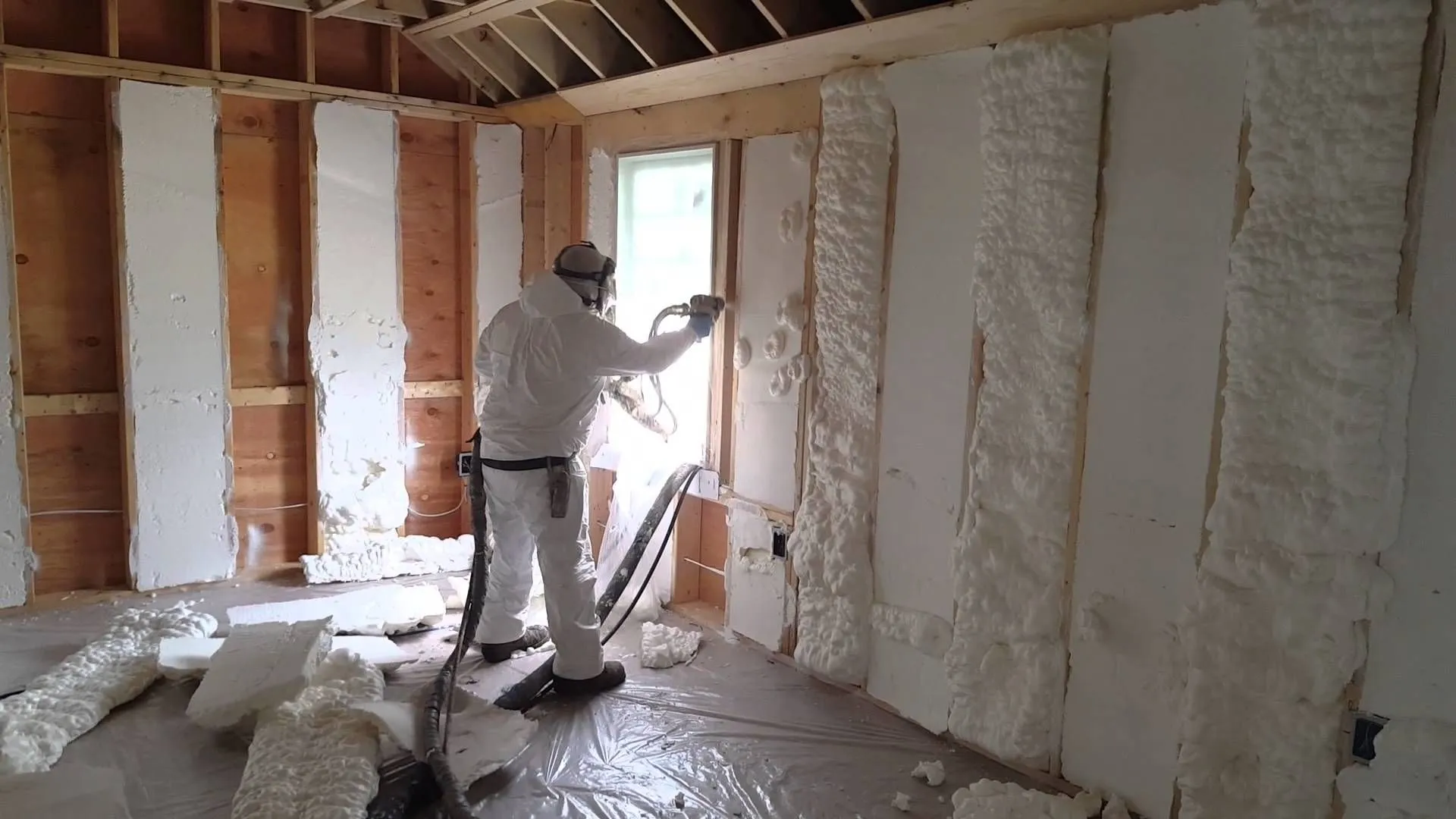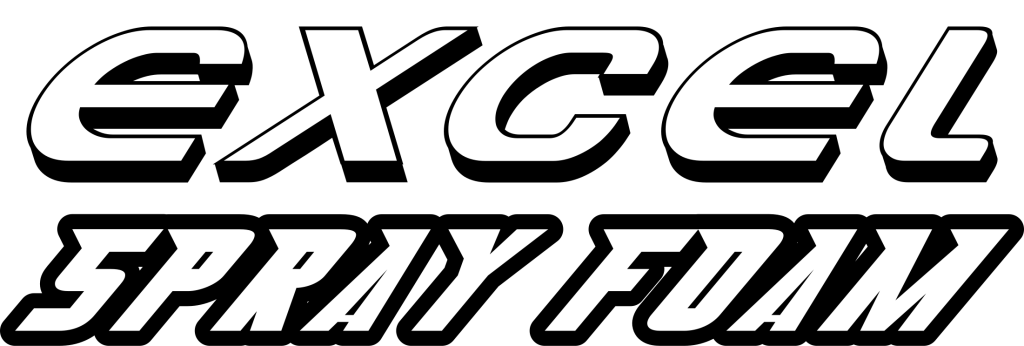Spray foam insulation is popular for its superior energy efficiency, air-sealing capabilities, and long lifespan. However, despite its many benefits, spray foam also has notable drawbacks that homeowners and businesses should consider before deciding. Understanding these potential downsides will help consumers make an informed choice regarding their insulation needs.
Potential Health Concerns with Spray Foam
Off-Gassing and Chemical Exposure
Spray foam insulation contains chemicals like isocyanates and polyols, which can release volatile organic compounds (VOCs) during installation and curing. This process, known as off-gassing, can cause respiratory irritation, headaches, and dizziness in individuals sensitive to chemical exposure.
How Long Does Off-Gassing Last?
- Initial Phase: Off-gassing is most intense within the first 24 to 72 hours post-installation.
- Long-Term Residual Effects: Some low-quality or improperly installed spray foam may continue emitting VOCs for weeks or even months.
Potential Allergic Reactions and Sensitivities
People with pre-existing respiratory conditions, asthma, or chemical sensitivities may experience worsening symptoms when exposed to spray foam fumes. Proper ventilation during and after installation is crucial to mitigating these effects.
Installation Challenges and Risks
Professional Expertise Required
Unlike traditional insulation methods like fiberglass or cellulose, spray foam requires professional installation. Improper application can lead to:
- Uneven Expansion: This can cause gaps or over-expansion, leading to structural stress.
- Incomplete Curing: This can result in lingering odors and prolonged off-gassing.
- Fire Hazard: If applied too thickly at once, foam can overheat and combust.
Cost of Professional Installation
Spray foam insulation is significantly more expensive than fiberglass or cellulose insulation. The installation cost includes:
- Material Expenses: Higher cost per square foot compared to other insulation types.
- Labor Costs: Requires certified professionals for correct application.
- Ventilation and Safety Measures: Additional steps to ensure safe installation.
Environmental Impact of Spray Foam
Non-Biodegradable Materials
Spray foam is a petroleum-based product, making it non-biodegradable. Unlike natural insulation materials like wool or cotton, it does not break down over time and contributes to landfill waste when removed.
High Global Warming Potential (GWP)
Some spray foams use hydrofluorocarbon (HFC) blowing agents, which have a high GWP. While newer formulations utilize more eco-friendly options, many traditional spray foams still have a considerable environmental footprint.
Structural and Property Concerns
Potential for Trapping Moisture
Although closed-cell spray foam is excellent for moisture resistance, incorrect installation or gaps in application can trap moisture within walls, leading to:
- Mold Growth: Increased risk of fungal development due to trapped humidity.
- Wood Rot: Can degrade wooden structures over time.
- Structural Damage: This can weaken the integrity of the building framework.
Difficult Removal Process
Once applied, spray foam is challenging to remove. If issues arise—such as improper installation, moisture retention, or damage—it requires intensive labor and costs to extract and replace.
Impact on Home Resale Value
Potential Buyer Concerns
While some buyers appreciate the energy efficiency of spray foam, others may be hesitant due to:
- Chemical Exposure Risks: Health-conscious buyers may avoid homes with spray foam.
- Irreversible Application: Removal can be expensive and time-consuming.
- Compatibility Issues with Wiring and Plumbing: Some home inspectors and appraisers may flag concerns over encasing wiring or plumbing within hardened spray foam.
Code Compliance Issues
Building codes may vary by state and city. Some jurisdictions have stricter regulations regarding spray foam insulation, particularly concerning fire safety, off-gassing limits, and moisture control.
Cost vs. Benefits: Is Spray Foam Worth It?
| Factor | Pros | Cons |
| Energy Efficiency | Reduces heating and cooling costs | Higher upfront installation cost |
| Longevity | Can last over 50 years | Difficult to remove or modify |
| Moisture Control | Prevents leaks in closed-cell foam | Can trap moisture if applied improperly |
| Installation | Requires professional application | Incorrect installation leads to problems |
Conclusion
While spray foam insulation offers excellent energy efficiency and durability, its drawbacks—including health risks, environmental concerns, high costs, and installation challenges—should be carefully considered. Homeowners in Plano, TX, should weigh the pros and cons based on their specific needs and budget before deciding on this insulation method.
Contact Excel Spray Foam for Expert Guidance
For homeowners and businesses in Plano, TX, seeking professional spray foam insulation services, Excel Spray Foam provides expert installation, ensuring maximum efficiency and safety. Contact their team today to learn more or request a consultation.
FAQs
How long does spray foam insulation last?
Spray foam insulation can last 50 years or more if installed correctly. However, poor installation or exposure to excessive moisture can reduce its lifespan.
Can spray foam insulation cause health problems?
Yes, during installation, spray foam releases VOCs that can cause respiratory issues, headaches, and skin irritation. Proper ventilation and professional application can help minimize risks.
Is spray foam insulation safe for homes with children and pets?
Once fully cured, spray foam is generally considered safe. However, families with young children, pets, or individuals with chemical sensitivities should take precautions during installation and curing periods.
Does spray foam insulation affect home resale value?
It depends. Some buyers appreciate the energy efficiency benefits, while others are wary of potential chemical exposure and removal difficulties.
What happens if spray foam is installed incorrectly?
Improper installation can lead to poor insulation performance, structural stress, and prolonged chemical off-gassing. It is crucial to hire certified professionals for proper application.
Can spray foam be applied over existing insulation?
It is generally not recommended to apply spray foam over existing insulation as it may not adhere properly and could trap moisture.
Does spray foam insulation require maintenance?
Spray foam insulation itself requires minimal maintenance, but regular inspections should be conducted to check for cracks, gaps, or moisture issues.
Can spray foam insulation be used in all climates?
Yes, but different formulations work better in specific environments. Closed-cell spray foam is better suited for humid and cold climates, while open-cell foam is more appropriate for moderate climates.
How much does spray foam insulation cost in Plano, TX?
Costs vary based on the size of the area and type of foam used, but homeowners in Plano, TX, can expect to pay between $1.50 and $5.00 per square foot for professional installation.
Can I install spray foam insulation myself?
DIY spray foam kits are available, but professional installation is recommended to ensure proper application, safety, and optimal performance.



